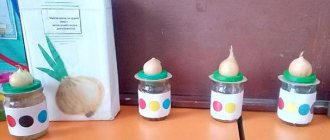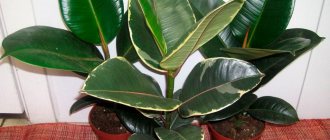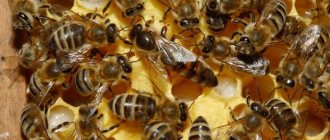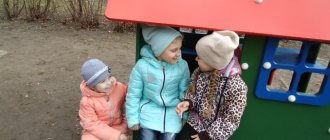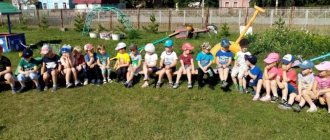Observing the growth and development of living beings
During the school year, teachers and children grow various plants, and often the offspring of some animals. This provides favorable conditions for conducting interesting observations of particular ecological significance. The relationship of a living being with its environment in the process of its ontogenetic (individual) development throughout the period of growing up is not the same - it changes significantly at different stages of its growth and development. This circumstance makes it possible for the teacher to trace these phenomena with children using the examples of some plants and animals.
Observations of plant growth In winter and spring, all age groups create a vegetable garden in the window, teachers grow onions, garlic, flower seedlings, as well as greens to feed the inhabitants of the corner of nature. In spring and summer, it is possible to grow garden crops on the kindergarten site. Any of the options is suitable for carefully tracing the growth and development of one annual crop - the successive stages of ontogenesis and the corresponding environmental conditions.
The most suitable for this purpose are plants that have large seeds: garden or ornamental beans, peas, nasturtium, cucumber, corn, sunflower, etc. Large seeds of these plants quickly and visibly change at the first stage - the germination stage. They swell, increase in size, their skin bursts, and a thick white sprout (root) appears. All this happens within a few days and always under certain external conditions - the presence of moisture and heat. Nutrients are present in the cotyledons themselves, the seed germinates due to their consumption.
The second stage of development is the stage of vegetative growth, during which the green mass grows intensively: stem and leaves. During this period of development, the whole complex of environmental factors is necessary: moisture, nutrients, light, heat, air. The next two stages of ontogenesis are the stages of flowering and fruiting, i.e. the appearance of new plant organs - first flowers, and then seeds or fruits with seeds. During this time, many plants need more water and nutrients (often very specific ones) than before. That is why they are watered and fed with fertilizers more often. Thus, using the example of one or two plants, one can trace their successive changes, significant and very noticeable transformations in their appearance in connection with changing living conditions.
With children of senior preschool age, it is advisable to trace the growth and development of one plant from seed to seed. The most suitable crop for this purpose is cucumber. It has a number of advantages over other crops: large seeds that germinate when soaked; clearly visible modifications of the above-ground part of the plant - rapidly growing green mass, large leaves of a distinct shape, beautiful and large flowers, tasty fruits; the ability to grow both on site and indoors (which is especially valuable). There is only one drawback - the entire period of growth and development from seed to cucumber is quite long.
To grow a cucumber indoors and get a harvest, you must meet the following conditions: take early-ripening seed varieties suitable for indoor soil; create a “warm bed” in a large container; start growing when the daylight hours are already long enough; grow no more than 2-3 plants in this bed.
Consecutive observations of a cucumber constitute a cycle, the content of which is changes in a growing and developing plant in relation to its habitat. The specifics of such a cycle are the following points: the optimal time interval between observations (in the case of a cucumber - two weeks) and the mandatory recording in the calendar of both the plant itself and the conditions under which it grows. Considering that the content of observations is always the same (state of the plant, changes in its appearance), their construction can be the same, i.e. include the same set of questions.
For example, each observation of a cucumber could follow the following pattern. o What's in front of you? o Two weeks have passed - has the cucumber changed? o What has changed - stems, leaves or something else? What have they become? o Why did the plant change? o What conditions did the cucumber grow under at this time?
At each stage of plant development, the teacher draws the children’s attention to the appearance of new organs in the plant and to the need to change the conditions of its living environment (more watering, spraying, fertilizing, etc.) than before.
The cycle of observations of growth and development can be built on the example of other plants: radish (growing quickly, but the root crop is in the ground, it is not visible), tomato (an interesting plant, but has small seeds, a long development period and complex agricultural technology). The most affordable way is to grow greens from a bulb in a glass jar. In this case, observations are made of the growth of roots and leaves. However, there are no clear transformations (stages of development) in the appearance of the plant, since the changes reflect only the process of its growth. The same applies to the living environment of the bulb - it does not change, water, light, heat remain constant. It does not need to be fed: the green feathers receive nutrients from the bulb itself, which makes it seem to “lose weight.” This feature of growing onions turns out to be an advantage - all stages of its growth are easy to draw.
Observations of animal growth and development
A series of observations of the growth and development of animals can be built on the example of those inhabitants of a kindergarten who produce offspring. These include birds (canaries, budgies), mammals (hamsters, white rats, guinea pigs), and viviparous fish. Each of these animals has its own distinct specificity, resulting from the biological characteristics of the species, therefore the cycles of observations of the growth and development of young individuals differ significantly from each other.
The most effective are observations of canaries: these are calm birds, their nests are open - you can always see what is happening in them, the period of incubation of eggs is short, the chicks hatch almost simultaneously. The observation cycle includes the following points.
Arrangement of the nest by both parents, i.e. preparing conditions for future offspring; The bird’s habitat at this time is enriched with building material, additional food (mineral nutrition is of particular importance, in particular egg shells, which are necessary for the formation of a hard shell of the egg),
The laying of eggs, inside of which there are living embryos, their incubation is the first visible stage of bird development, which is carried out in certain conditions: on soft bedding, in heple, which is provided by the nest and the parents sitting on the eggs, thanks to the nutrients present in the protein.
Hatched chicks are the second stage of ontogenesis; the chicks are absolutely not ready for independent life, and their survival depends entirely on the environment-forming behavior of their parents: feeding, heating and protection; in external conditions, “baby” food is added, which parents feed their yellow-mouthed babies.
Fledgling chicks are the third stage of development, characterized by mixed living conditions: parental care continues and independent behavior begins - searching for food, spatial orientation; learning to fly and other independent living skills.
Sexually mature young birds (the final stage of development) - they are almost no different from their parents and are able to breed offspring themselves; their living conditions are the same as those of adult birds.
The stages of development of parrots are the same, but the process of growing up occurs differently: the hatching of the chicks is extended over time, the initial development is hidden from children, since the nest is in a nest box. Nevertheless, observations are quite possible, they are only organized somewhat differently.
In mammals, development occurs differently: the first stage of ontogenesis is intrauterine, and external conditions are normal, the female eats only a little more than usual, and people must handle her with care.
The next stage is the newborn. This period is characterized by two development options. In some species (for example, guinea pigs), the cubs are born mature (sighted, with fur, and quickly begin to move independently). In others (for example, golden hamsters) - immature, helpless, (blind, naked, inactive). In both cases, the mother is the main environment-forming factor - she feeds the cubs with milk, warms, protects and protects them. In the first case, this period is shorter, since mature cubs acquire skills of independent behavior much faster. In the second case, the newborn period is longer and, as a rule, proceeds secretly (in a hole, in a house) until the cubs begin to see clearly, become covered with hair and begin to crawl out of the nest. External conditions at this time improve: the female is fed abundantly and variedly, given water so that she can produce milk and, most importantly, the family is not disturbed. Sometimes the annoying attention of people turns into a disaster: the female eats her offspring.
The next period in the development of mammals is juvenile; the grown-up cubs play a lot under the supervision of their parents and actively learn the skills of adult behavior. External conditions remain the same: adult animals, as before, take care of the babies, feed them, and take care of them. Unlike the previous period, you can communicate and play with the cubs.
The final stage of ontogenesis is sexual maturity and fully independent behavior. Thus, a series of observations of the growth and development of animals using the example of an ornamental bird or a furry animal allows us to show children an interesting ecological aspect: the hundred days of development of an animal organism and its relationship with a changing habitat. This cycle of observations has a special educational significance: the teacher teaches preschoolers to handle the offspring of animals with great attention, care and caution, teaches them to create a favorable environment for them, and to take into account the fragility of young life.
Control questions
1. What is a “weekly method” for introducing a preschooler to seasonal natural phenomena? What is its specificity?
2. What parameters of living and inanimate nature does the teacher observe with children every month? How do observation techniques change throughout the week?
3. Why is it necessary to observe the growth and development of plants and animals? What is the ecological significance of these observations?
4. What stages of development does an annual plant go through? How is the monitoring cycle organized and carried out?
5. What stages of development do animals go through: birds, mammals? What is the ecological meaning of observing them?
6. What educational significance do children’s observations of developing living beings have?
Assignment Make a series of observations of the family of any animal - write the number, name and purpose of each observation
The meaning of nature calendars, their types
New pedagogy » Nature calendars: meaning, types and methods of organizing work with them in a preschool institution » The meaning of nature calendars, their types
Page 1
In the process of introducing preschoolers to nature, you can create and use a variety of models. Some of them are nature calendars - graphic models that reflect various, long-term phenomena and events in nature.
Keeping nature calendars is of great importance for the environmental education of children from two points of view: first, it is created (modeling phenomena), then used in the educational or educational process. For the development of preschoolers, familiarity with naturally occurring changes in nature is also important: the growth and development of living beings, seasonal changes in nature.
By carrying out such work, children's horizons and ideas expand, their ideas about objects and phenomena of reality develop and become more precise, certain logical connections and dependencies between them are established, their vocabulary is enriched, their powers of observation and sustainable cognitive interest develop.
Working with nature calendars is of great importance for children in terms of mental education: it abstracts and clearly demonstrates the natural connection of natural objects, the relationship of a cause-and-effect nature. And this makes it possible to understand phenomena in a general way and contributes to the development of not only visual-figurative, but also logical thinking.
Colorful pictures of nature at different times of the year, with the skillful guidance of a teacher, become a means of aesthetic and moral education: a sense of beauty, they develop an artistic perception of reality. Preschoolers are taught to be neat and systematic in their work. They are also important in patriotic education. Children learn to love and take care of their native nature, develop a sense of pride in their region.
There are three types of calendars that are widely used in preschool institutions and reflect those natural phenomena that are in the field of vision of children and constitute the content of the most frequent observations.
Calendars of observations of the growth and development of living beings.
By carrying out this work, you can observe the growth and development of radishes, cucumbers, and onions. Or animals - the growth and development of a hamster in the senior group or the development of chickens and their relationship with the chicken in the preparatory group. Maintaining such a calendar can be done in the following ways. Let's consider them using the example of observations of radish growth (Fig. 1.1). The first three columns are filled in daily, the days of the week are painted in different colors, the weather and garden work are recorded with icons. In the last column, once at the end of the week, a color image of the vegetable is given, the measuring strip is painted over according to the height of the plant.
Rice. 1.1 Observation calendars for radish growth
Another way to fill it out is a screen calendar. It reflects the spatio-temporal parameters of the growth and development of a garden crop (Fig. 1.2). One-time weekly observations and marks (color drawing) create a picture of consistent changes in the underground and above-ground parts of the plant. Simultaneous recording of weather and labor operations gives an idea (albeit incomplete) about the conditions in which the vegetable crop develops. The “time” column, for example, shows how many weeks the development of the root crop lasts. In a similar way, you can model the process of growth and development of any plant (ground or indoor), grown vegetatively or from seeds, but having relatively rapid growth and a short period of development.
Fig.1.2. The calendar pages are connected into a screen. Three pages show the sequential growth of radishes over three weeks.
It is much easier to record changes in growing plants than changes in young animals. This is explained by the fact that the latter have behavior and therefore, during growth and development, acquire not only new external features, but also new aspects of behavior. A graphic model of the growth and development of an animal should reflect changes not only in external appearance (structure), but also in motor activity (behavior), and changing environmental conditions. Motor activity should be understood as how an animal moves in space (walking, running, jumping), how it obtains food, and what actions are aimed at establishing relationships with relatives and with other living beings. Thus, the content of this type of graphical model is more extensive. Therefore, recording animal behavior is somewhat difficult. This is due to the search for adequate and understandable icons and symbols.
Pages: 1
Similar articles:
The place of the gaming system in a chemistry course The game takes up 1/5 of the time, without displacing practical activities. A student’s learning occurs through influence on his organs of vision: demonstration of experiments, reading material (50% of what is observed remains in memory, 30% of what is read), organ of hearing - a teacher’s monologue, dialogue with the teacher, with classmates (10% of what is heard remains in memory), practical activity the student himself, independent work...
The role of parents in the formation of a child’s personality The formation of a person’s personality does not occur under ideal conditions. Socialization and upbringing in the family are understood by us as spontaneous and often unconscious imitation or borrowing of manners, views, and attitudes of parents. Outwardly, the behavior of parents can be quite socially acceptable, since it is subject to prevailing morality, rules and norms of relationships. However, the external social form...
